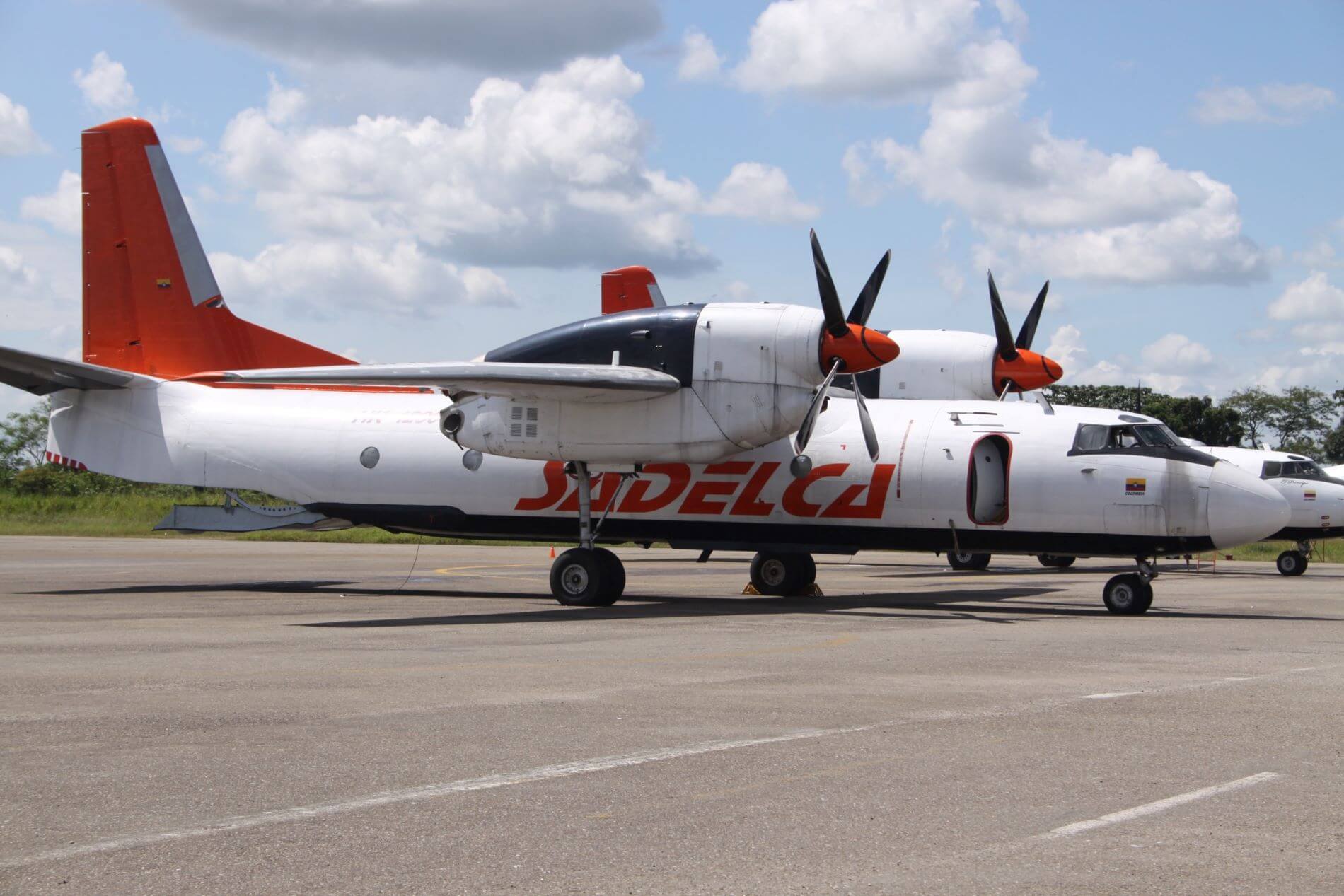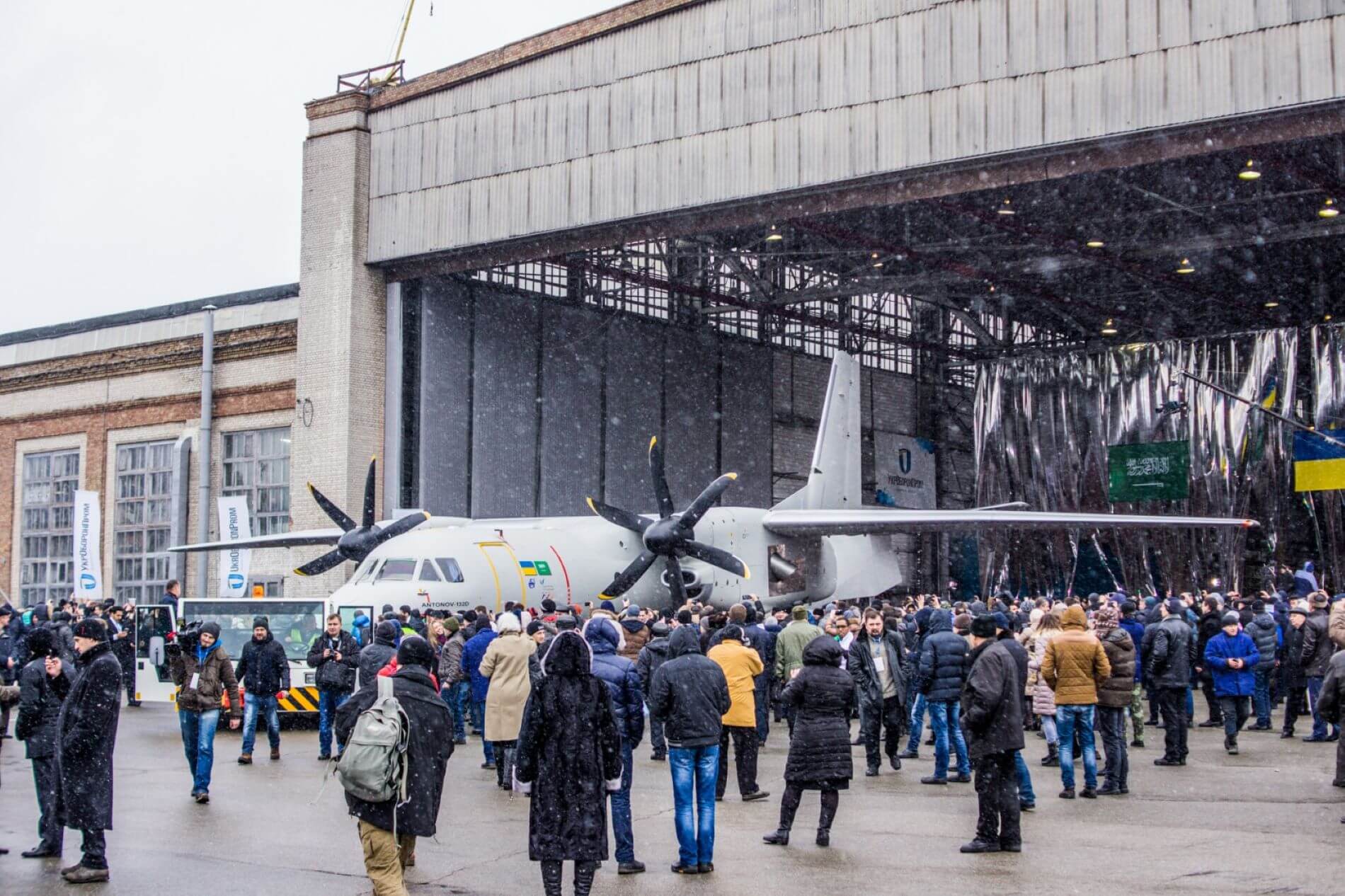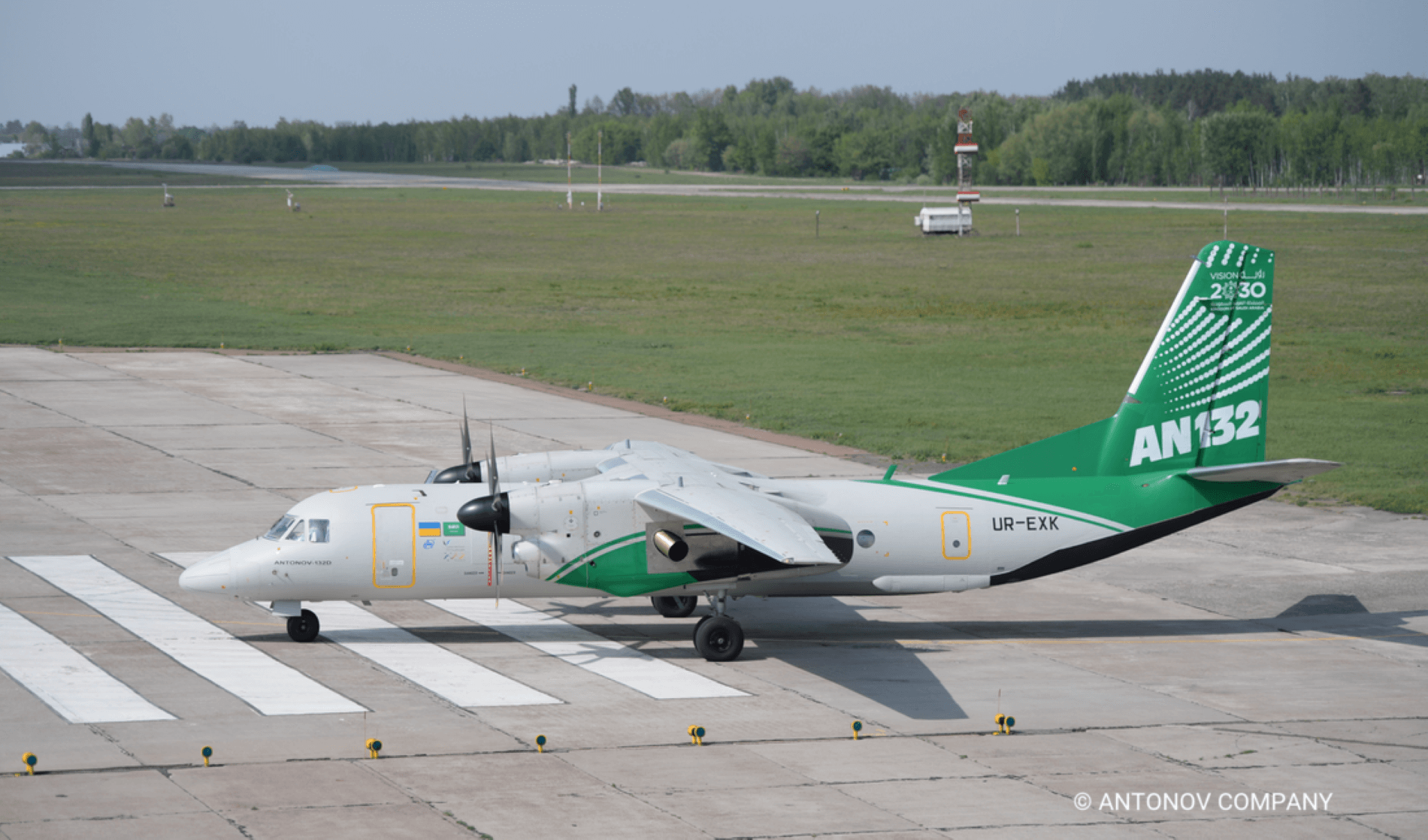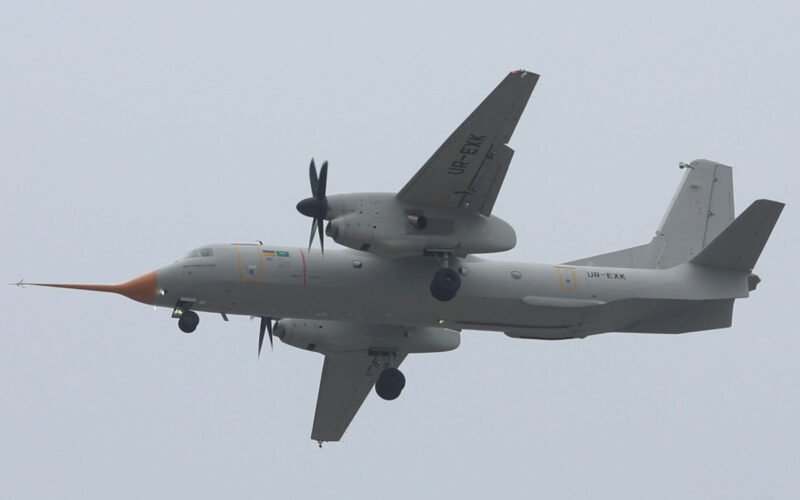The domestic aircraft industry in Saudi Arabia has been trying to take-off for quite some time. One of the country’s last attempts to take flight was with the An-132, an aircraft with an incredibly short and fragmented history.
It is far more difficult to pinpoint the beginning of the project than its end. The origin of the An-132 can be traced to the An-24, a Soviet short-range passenger aircraft, which was designed in the 1950s. Back then, it was a regular regional turboprop with an unremarkable ability to use short and unprepared runways. But in time, this feature became the model’s unique selling point and the reason for its popularity.
In the 1960s, a military transport version, the An-26 Curl, was born. It became the most mass-produced aircraft of its type, and hundreds continue to be operated to this day. Similar to the immortal Douglas DC-3, a WWII-era transporter and a darling of semi-legal airlines that operate in extreme environments, An-26 continues to be widely employed in Africa, South America and various other locations.
In the 1980s, and at the request of the Indian Air Force, the An-26 was fitted with more powerful engines and received further upgrades, which allowed the aircraft to operate from high-altitude mountain bases. The new version of the aircraft, the An-32 Cline, remained in production until 2012. If not for a shift in geopolitics, this version of Antonov’s hardcore turboprops could have been considered its finest iteration.

Antonov An-32 of Sadelca, a Colombian cargo airline. (Image: Aeroprints / Wikipedia)
The Saudi offer
2014 saw a revolution in Ukraine, which resulted in the deterioration of its relations with Russia.
After inheriting Soviet supply chains, the Antonov company was heavily associated with Russia. Subsequently, the company was thrown into crisis and began to look elsewhere in a bid to attract orders. It is a search that has continued to this day, albeit at a reduced pace.
However, late-2010 saw an advancement in Antonov’s bid to establish new relationships, including several attempts to sell the An-225 Mriya’s design to China and the early sales of the An-178. In short, the company was desperate.
Saudi Arabia used Antonov’s situation to its advantage. In November 2014, the country initiated negotiations with Ukraine and, in mid-2015, an agreement was signed. This arrangement focused on the An-32, a simple yet proven design that would finally cement Saudi Arabia as capable of manufacturing its own aircraft.
Previously, Antonov had tried pitching the same scheme to numerous nations that expressed an interest in manufacturing Antonov’s aircraft under license. The company would promise to develop, test and manufacture an improved prototype of an aircraft. Meanwhile, its client would acquire expertise in its development. A production line would then be established in the client country, and the intellectual rights to continue manufacturing the aircraft would also be transferred. Just several years ago, the same idea, which featured the An-178 and the An-225, was almost accepted by China.
Saudi Arabia agreed to this process when it has shown interest in the An-32. In addition to any monetary gain, such a partnership would finally allow Ukraine to move away from its ties with Russia and begin to work with Western suppliers. The Saudi’s interest in westernizing the An-32 would be instrumental in allowing this to happen.
The Cline, which was a relatively old aircraft, would have required several upgrades. So, the antiquated engines, made by Sich, would be swapped for PW150As, ubiquitous turboprops that had previously powered many commuter aircraft on the market. Honeywell would provide avionics and APU would be purchased from Hamilton Sundstrand. The aircraft would also feature British-made propellers, a French air management system, and many other European and American components that would substitute defunct Russian parts.
These changes would result in twice the range of the original An-32 as well as vastly improving cargo capacity (9,200 kg / 20,300 lb instead of 6,700 kg / 14,771 lb), while also retaining exceptional take-off and landing performance.
On Saudi’s behalf, the deal was managed by Taqnia, a government-owned company involved in high-tech products and services. By 2017, the company would build a production line in Riyadh, on (or near) the premises of King Abdulaziz City for Science and Technology and begin to produce new aircraft in tandem with a renewed line in Ukraine. Both lines would be fully operational by 2018.
Snow and desert
It was not entirely clear what niche the airplane, designated An-132, would occupy. Eighty An-132s, to be produced by and for Saudi Arabia, were publicized as being useful for both military and civilian purposes. Meanwhile, the Royal Saudi Air Force (RSAF) had a long-standing relationship with Spanish CASA and received a large fleet of C-212 Aviocar light transports in the 1990s and 2000s. Simultaneously, RSAF was negotiating a purchase of Lockheed C-130 Hercules heavy transporters, which left little space for the Antonovs. It could be that the An-132 was a purely political project, with the prestige of domestic aircraft manufacturing put ahead of practicality.
The initial Saudi payment of $150 million, as per agreement, would cover approximately one third of the development costs and two thirds of testing costs, with the remainder covered by Ukraine. The one-and-a-half-year cycle would see the production of the An-132D technology demonstrator (which was the first Antonov to be made entirely without Russian parts), the transfer of its technology and documentation to Taqnia, and the establishment of production lines in both countries.
In December 2016, the prototype was rolled out in Kyiv under heavy snow. During the event, Antonov’s spokesman praised An-132 as the only aircraft in the world able to operate in desert conditions with such ease. But the contrast of his words and the chilly climate outside the hangar was to set the scene for further events.
Statements released at the rollout ceremony reveal that many of the points proposed in the 2015 agreement were, once again, open to renegotiation. While the Ukrainian side claimed that its production line was “almost ready”, the work on the Saudi side was much slower and production was delayed.
According to Antonov, it was “unclear” when manufacturing would begin, which showed that prior agreements had been discarded and negotiations were back to square one. The announcement also used the future tense to describe the transfer of technology, highlighting that cooperation had not made much progress since 2015.
Nevertheless, in March 2017, An-132D embarked on its maiden flight and headed for Riyadh to perform testing in desert conditions. At the same time, 50 engineers from Saudi Arabia were undergoing training at Antonov technical school, which suggested that some intellectual cooperation was taking place. However, Ukrainian engineers had not begun to establish production lines in Saudi Arabia, which was yet another part of the agreement that was behind schedule.

The rollout of the An-132D demonstrator (Image: ЦТС)
Soon, the prototype began to tour the world. At the Paris Air Show in June 2017, it was revealed that the Saudi production line was due to start in 2021. By this time, the aircraft would have also received an additional upgrade and a significant part of the airframe would be formed of composite materials, all manufactured by Saudi companies.
Further cooperation between Saudi Arabia and Ukraine also took place and two new contracts were signed in November 2017. While its contents were not revealed, it is presumed that one arrangement was for the An-188, a jet-powered version of the An-70 heavy transporter. Another may have been about the final production of the An-132. However, in subsequent press releases the establishment of the Saudi production line was still referred to in the future tense.
An untimely end
During the remainder of 2017 and 2018, nothing much appears to have happened. At some point, the location of the Saudi plant was moved to Taif. While Antonov’s engineers were supposed to set it up, they did not arrive. The An-132D continued with flight tests and there were negotiations with several potential buyers, which mostly consisted of the Indian Air Force.
Then, in April 2019, Antonov CEO Alexander Donets announced that cooperation was suspended. Supposedly, there was “a change in programme partner” in Saudi Arabia, which would mean that Taqnia was no longer attached to the project. It remains unclear which other Saudi company, if any, took its place.

An-132D in the new livery it acquired while touring airshows (Image: Antonov)
Donets also stated that the RSAF was committed to purchase six An-132s. He could have referred to the initial batch of aircraft manufactured in Ukraine or to the total number of airplanes that would end up in the hands of Saudi Air Force. But either way, it was a significant decrease from the 80 aircraft, which were agreed in 2015.
Saudi has neglected to explain what happened. But there were reports that RSAF’s focus shifted towards heavier aircraft that would supplement the fleet of its C-130s, primarily the Airbus A400M. Another explanation, which has been put forward by certain experts, was that the An-132 project was never taken seriously by Saudi Arabia and was not pursued beyond the “consideration” phase. Antonov, desperate for orders, had simply convinced itself and its partners about the inevitability of mutual production.
AeroTime had contacted both Taqnia and Antonov with questions about the project, but neither company responded.
Since 2019, the only An-132D prototype has not taken off. In February 2021, the aircraft’s registration was revoked by the State Aviation Administration of Ukraine because its airworthiness certificate had expired. This, as far as it is possible to tell, marks the end of the program.

